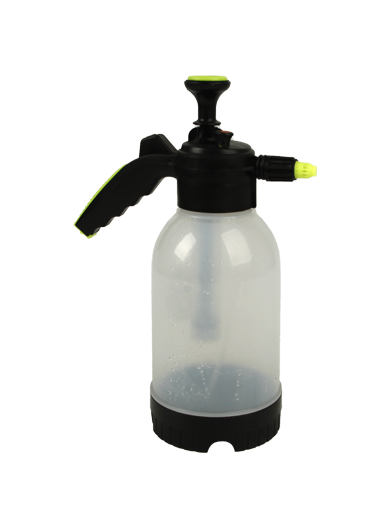It Is A Professional Sprayer Manufacturer Integrating Research, Design And Development.
+86-15824002009 Contact UsAt its core, the Air Pressure Watering Can consists of a fluid reservoir, a pump assembly, a pressure release mechanism, a spray nozzle or spout, and a sealing system. Each of these components is designed with dimensional precision to ensure compatibility and durability. The body of the can is typically constructed from high-density polyethylene (HDPE) or polypropylene, materials selected for their resistance to chemicals, impact, and UV exposure.

The shape of the reservoir is often cylindrical or conical, allowing even distribution of internal pressure. Some models may also include a transparent strip to allow users to monitor liquid levels. From a design perspective, the Air Pressure Watering Can must support both portability and pressure resistance, which dictates material thickness, weight distribution, and handle ergonomics.
Pressurization and Pump Mechanism
The defining feature of the Air Pressure Watering Can is its pump mechanism. This is typically a manual piston-type system that, when activated by the user, forces air into the reservoir above the liquid level. As the air compresses, it exerts downward pressure on the liquid. When the valve or trigger is opened, this pressure pushes the water out through the nozzle.
Manufacturers must ensure the pump cylinder, piston, and seal operate smoothly without introducing friction that might cause mechanical wear. The Air Pressure Watering Can relies on a consistent build-up and retention of pressure to function correctly, making the precision of this assembly critical.
Spray Nozzle and Water Flow Control
Another key aspect of the Air Pressure Watering Can is its nozzle. This component dictates the pattern and volume of water expelled from the device. Adjustable nozzles allow users to switch between a fine mist and a direct stream. This functionality is essential for applications ranging from delicate seedling care to general watering of shrubs.
Nozzle geometry must be manufactured to tight tolerances. An inconsistent internal diameter or poorly molded threads can result in water leaks or an uneven spray. The nozzle must also be compatible with the types of liquids likely to be used, whether it's clean water, diluted fertilizer, or plant treatments. Each Air Pressure Watering Can is tested during the production process to ensure consistent nozzle output and durability.
Sealing and Pressure Retention
For the Air Pressure Watering Can to perform effectively, airtight sealing is non-negotiable. A combination of rubber or silicone gaskets is used around the pump shaft, lid, and nozzle joints. These seals are critical to maintaining internal pressure once it is generated. Without them, air would leak, resulting in decreased efficiency or complete failure to spray.
The sealing system must accommodate repeated use, temperature fluctuations, and exposure to various liquids. During manufacturing, stress testing is conducted on these components to evaluate long-term sealing effectiveness. The performance of the Air Pressure Watering Can is directly tied to this aspect of its design.
User-Centered Design Features
The Air Pressure Watering Can is designed for comfort during repeated operation. This includes features like a large, easy-grip handle, a wide filling opening, and a conveniently placed pressure release valve. The release valve plays a safety role, allowing the user to depressurize the can after use or before opening it to refill.
Balance is also considered in design. A full Air Pressure Watering Can must remain stable whether in use or resting on a surface. Wide bases and non-slip pads are sometimes integrated into the bottom of the reservoir to support this function.
Durability and Testing in Production
Before reaching the market, each Air Pressure Watering Can undergoes a series of quality control tests. These tests assess pressure retention, leak resistance, pump action, and the functionality of all moving parts. Material samples are subjected to UV exposure, chemical corrosion tests, and drop tests to confirm structural integrity.
We will provide you with the latest product
information as soon as possible
